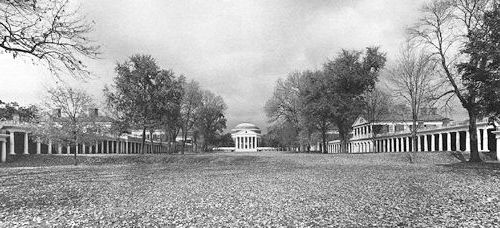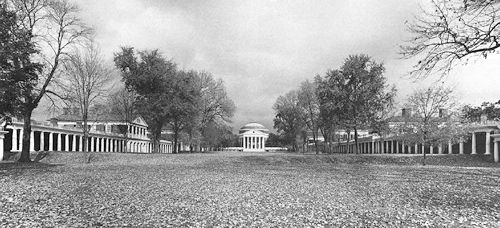
In God's Own Junkyard Peter Blake has compared the chaos of commercial Main Street with the orderliness of the University of Virginia. Besides the irrelevancy of the comparison, is not Main Street almost all right? Indeed, is not the commercial strip of a Route 66 almost all right? As I have said, our question is: what slight twist of context will make them all right? Perhaps more signs more contained. Illustrations in God's Own Junkyard of Times Square and roadtown are compared with illustrations of New England villages and arcadian countrysides. But the pictures in this book that are supposed to be bad are often good. The seemingly chaotic juxtapositions of honky-tonk elements express an intriguing kind of vitality and validity, and they produce an unexpected approach to unity as well.
It is true that an ironic interpretation such as this results partly from the change in scale of the subject matter in photographic form and the change in context within the frames of the photographs. But in some of these compositions there is an inherent sense of unity not far from the surface. It is not the obvious or easy unity derived from the dominant binder or the motival order of simpler, less contradictory compositions, but that derived from a complex and illusive order of the difficult whole. It is the taut composition which contains contrapuntal relationships, equal combinations, inflected fragments, and acknowledged dualities. It is the unity which "maintains, but only just maintains, a control over the clashing elements which compose it. Chaos is very near; its nearness, but its avoidance, gives . . . force."50 In the validly complex building or cityscape, the eye does not want to be too easily or too quickly satisfied in its search for unity within a whole.
Robert Venturi, Complexity and Contradiction in Architecture (1966), pp.102-3.
50. August Heckscher: The Public Happiness, Atheneum Publishers, New York, 1962; p. 287.
| |
| |

The two American scenes on the opposite page document the decline, fall, and subsequent disintegration of urban civilization in the United States. The two examples are separated by a mere 140 years in time, and by only a few hundred miles in space: at the top, Thomas Jefferson's campus for the University of Virginia, in Charlottesville, started in the 1820s; below, Canal Street, the busiest business street in New Orleans, as it appears in the 1960s.
Jefferson;s serene, urban space has been called "almost an ideal city--unique in America, if not in the world." Canal Street, one fervently hopes, has not been called anything in particular in recent times. It is difficult to believe that these two examples of what a city might be were suggested by the same species of mammal, let alone by the same nation. Jefferson called his campus "an expression of the American mind"; New Orleans' Canal Street, and all the other dreary Canal Streets that defile America today, have not been called "expressions of the American mind" by any but this nation's mortal enemies.
On the next several pages are further portraits of the American city today--portraits, not caricatures. They need no identifications; for these are the places two-thirds of us call "home." We walk or drive through them each day; this is where we work, shop, and are also born, exist, and die. What manner of people is being reared in these infernal wastelands?
One answer is: people who no longer see. Recently, the Honorable Mario Cariello, Presedent of the Borough of Queens, one of the five boroughs of New York City, delivered himself of the considered opinion that his Borough "truly represented the full flowering of advanced, urban living." Oh Mario, son of Rome--and of Florence, Sienna, Venice, Pisa, possibly even Orvieto--there was once another son of Italy, a man called Leon Battista Alberti, who asked, "How are we moved by a huge, shapeless, ill-contrived pile of stones?" Alas, he lived and died before there was a fully flowering Borough of Queens: and so you may never know his answer.
Peter Blake, God's Own Junkyard: The planned deterioration of America's landscape (1964), p. 33.
|